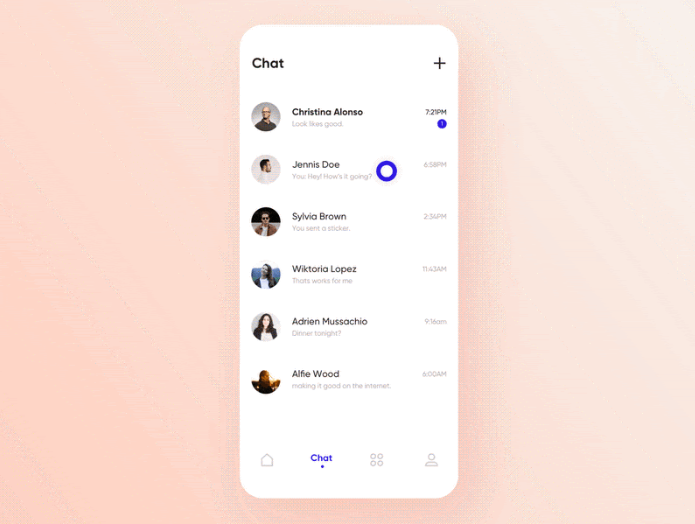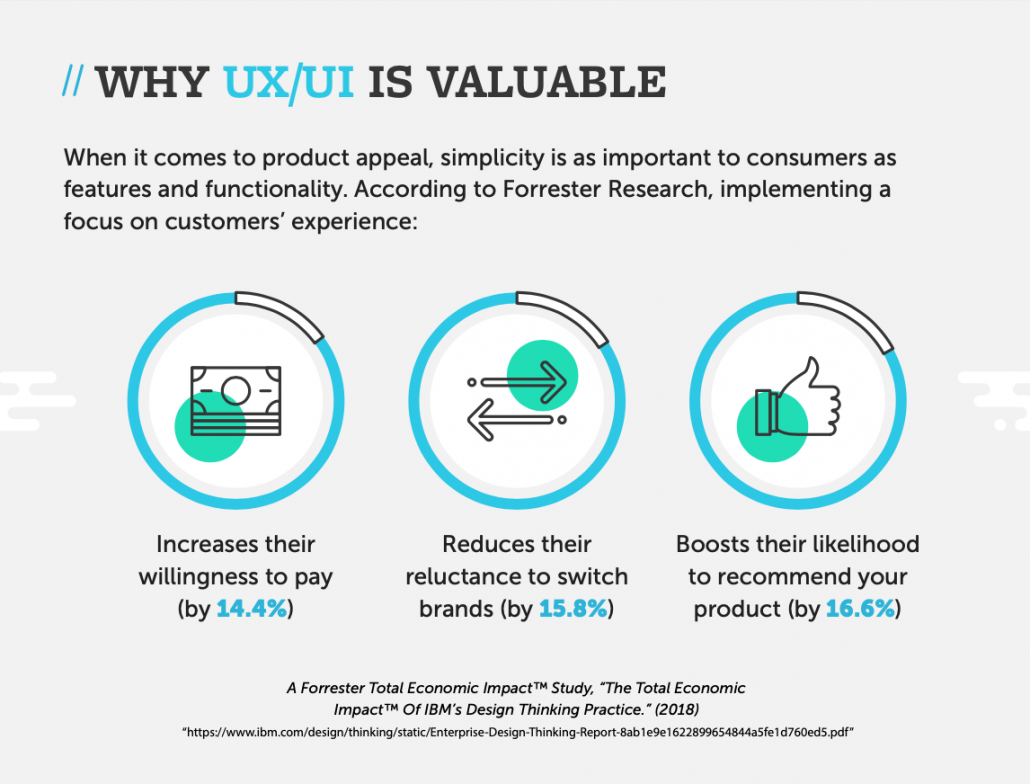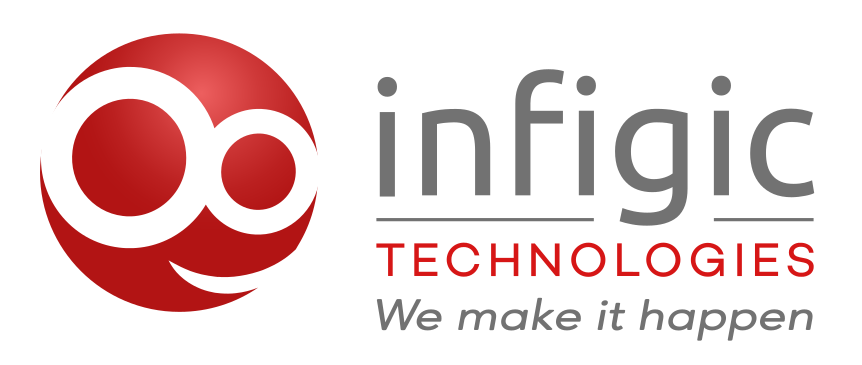The Difference Between UI and UX: Definition And Component

The Difference Between UI and UX: Definition And Component
Uber, Facebook, Amazon, Instagram – What’s the common factor among all these award-winning apps?
They’re designed with utmost perfection.
Many people think that widely accepted mainstream apps illustrate that the app with a revolutionary concept is bound to be successful in the market. But, that’s not the case!
Did you know:
According to the Statista report, 25% of the mobile applications were abandoned by the user after being installed.
Why is it so?
The reason behind the mobile app failure is simple: Inability of the applications to offer seamless and interactive UI/UX design.
Before Facebook dominated the world in 2008, MySpace ruled the market. However, the network rapidly declined and all the user base moved to Facebook. And the reason was simple: lack of user experience. Offering a similar solution like Yelp, Foursquare didn’t make it big.
Simply building an app by following perfect app design fundamentals is no longer a differentiator factor. Today users demand seamless UI design and integrated user experience. And, the inability to deliver it results in customers turning off your app.
As per UX cam reports, 90% of the people who are unsatisfied with the app user experience end up abandoning the solution.
So, to get the elements right, you need to understand them clearly. This blog post talks about what is UI/UX, discusses its importance and differences backed by a leading case study to build a successful product. So, let’s deep dive and get started to understand these most debatable terms in brief.
What is UI design?
 Source: Dribbble
Source: Dribbble
In simple language, the UI (user interface) design is the graphical layout of the application to which a user interacts. It consists of the buttons users click on, the text they read, sliders, images, entry fields, drop-down menu, icons, typography, color, and everything to which a user interacts.
The main goal of a UI design is to visually guide the user through the product interface. It’s all about creating an intuitive experience that does not require users to think much while interacting with the app.
User interface design = Interaction Design + Visual Design
What is UX Design?

Source: Behance
In simple terms, UX stands for User experience. A user experience with the app is identified by how they interact with it.
- Is the app smooth and intuitive enough to interact or is confusing?
- Does the app navigation feel local or random?
- While interacting with the app, what feeling does it give to the users? Are tasks accomplished efficiently or it seems like a real struggle?
A pleasant app user experience is identified by complexity level for the app users to interact with the UI elements that are created by the UI designers.
Why is UI/UX important?

Source: Techbootcamps
UI and UX do go hand-in-hand. The combination of these two terms shapes your entire product experience. Let’s say if you have taken two comparable products, you may end up getting the same results, but the UI/UX of the product reflects how the results are given. If a particular product has a better UI/UX as compared to another one, people are going to opt for it more because they enjoyed the overall experience with the product.
Today, user experience is a numero uno differentiator between the two similar competitive products.
Great UX isn’t just nice to have now—it’s expected. 40% of people who experience bad UX will turn to the competition. Some products succeed because they provide great experiences
– Jonathan Widawski
So now you’ve understood how important Ui and UX components are to build a successful app, let’s get the differences clear.
Understanding the difference between UX vs UI
One of the most debatable questions that revolves around the mind of the innumerable startups and budding entrepreneurs is:
What is the difference between UX and UI?
While user interface design consists of technical elements that allow a user to interact with the app, UX revolves around the overall impression a user takes away while experiencing the app.
Let’s take the example of Google. The user interface of the platform focuses on simplicity and ease. It is designed to make sure that users can fetch information in fractions of seconds.
However, if the search engine requests a high load time, it will inhibit the customer’s ability to seek quick information and the overall experience would be compromised.Apart from the basic difference, let’s get deep inside the user interface vs user experience.
UI vs UX: Difference Between UI and UX
| Variables | User Interface | User experience |
| Focus Area | UI focuses on the visual touchpoints that allow users to interact with the product. | UX focuses on the user journey of the app right from the first contact to the last one. |
| Approach | Human first approach to design aesthetic experience of the product | Human first approach to products designed by UI designers. |
| Creates | UI determines the app’s look and feel with the perfect combination of colour pallet, buttons, typography, animation and more. | UX determines to solve user pain points that encounter anywhere along with their product journey through structural design solutions. |
| Results | It results in product that delights users aesthetically | It results in products that delight users with its effectiveness. |
| Guidance | UI directs the users visually about the app interface | UX includes researching, testing, developing and prototyping the app. |
| Limitation | UI is limited to the screen. | UX goes beyond the screen and includes all the interactions and touchpoints of the user. |
Amazon – The Ultimate Case Study to Learn the Art Of UI/UX
There’s no better way to master the art of UI and UX than the leading retail giant Amazon.As per the latest reports, small and mid-sized businesses located in the USA sell more than 4000 items per minute on Amazon.
Did you notice:
Amazon has prominently placed its search bar on every page to ensure that users can quickly find, filter, and refine their product search results. The app focuses majorly on encouraging visitors to complete a transaction. Placing these elements strategically is a part of the app’s UI design.
The algorithm implemented personalized the homepage content of the users as per their previous interaction history. This further facilitates users for easy purchasing. The presence of ratings and reviews on the product page further helps users to validate their purchasing choice without leaving the website. This is something the simplifies its purchasing experience.
Ending Note:
UI is much more than typography, color pallets, and buttons. To create a winning app, you need to understand that UX is the key to boost your app performance. Make sure your developers are well-equipped with modern trends of UI UX design to help you reap the maximum benefits and ROI from an app.
If you’re looking to get your app idea into the app? Then contact us for UI and UX design service, Let our experienced UI and UX designers convert your idea into working app.











